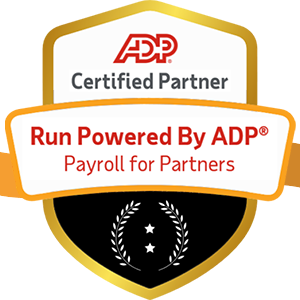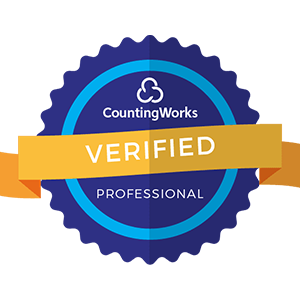
Bottom Line Up Front: Modern HR departments are shedding their administrative reputation to become strategic business partners. Organizations that successfully transform their HR function from cost centers to value creators see measurable improvements in employee engagement, retention, and ultimately, profitability.
The business world has fundamentally shifted how it views Human Resources. What once operated as a back-office function handling paperwork and compliance has evolved into a strategic powerhouse capable of driving significant business value. This transformation reflects a broader recognition that in today's competitive landscape, success hinges on an organization's ability to attract, develop, and retain exceptional talent.
Companies leading this change understand that their workforce represents their most valuable asset—and the department responsible for maximizing that asset's potential deserves a seat at the executive table.
Traditional HR focused heavily on transactional activities: processing payroll, managing benefits, maintaining employee records. These functions remain important, but they no longer define what HR can accomplish. Progressive organizations have discovered that when HR professionals understand business strategy and market dynamics, they can create solutions that directly impact revenue and growth.
This evolution requires HR teams to develop business acumen alongside their people expertise. They must grasp how workforce decisions influence customer satisfaction, operational efficiency, and competitive positioning. When HR professionals speak the language of business—metrics, outcomes, and financial impact—they gain credibility and influence throughout the organization.

The most successful HR transformations rely heavily on data-driven decision making. Analytics allow HR teams to move beyond intuition and anecdotal evidence to make recommendations based on solid evidence and predictive insights.
Consider recruitment as an example. Traditional approaches might focus primarily on filling positions quickly. Data-driven HR examines quality of hire metrics, source effectiveness, candidate experience scores, and long-term retention rates. This comprehensive view enables better investment decisions about where to focus recruiting efforts and resources.
Similarly, employee engagement surveys become powerful tools when analyzed alongside productivity metrics, retention data, and customer satisfaction scores. These connections reveal which engagement initiatives actually drive business results, allowing for more targeted and effective interventions.
Successful HR value creation rests on three interconnected pillars that, when aligned properly, create sustainable competitive advantage.
Exceptional organizations recognize that talent quality directly correlates with business performance. HR's role extends far beyond filling open positions—it involves architecting a talent ecosystem that supports both current needs and future aspirations.
Effective talent acquisition starts with deep understanding of what drives success in specific roles within your organization. This goes beyond technical skills to include cultural fit, growth potential, and alignment with company values. Advanced HR teams use predictive analytics to identify candidates most likely to succeed and stay with the organization long-term.
Development represents an equally critical component. High-performing employees expect growth opportunities, and organizations that fail to provide them risk losing their best people to competitors. Modern HR creates development pathways that align individual aspirations with business needs, ensuring that investment in people development drives organizational capability.
Succession planning takes this concept further by identifying and preparing future leaders. Organizations with robust succession programs demonstrate 2.5 times better financial performance compared to those without such systems, according to research from the Corporate Leadership Council.
Organizational culture influences every aspect of business performance, from employee engagement to customer experience. HR plays the central role in shaping, maintaining, and evolving culture to support business objectives.
Building high-performance culture requires intentional effort across multiple dimensions. Communication patterns, recognition systems, leadership behaviors, and decision-making processes all contribute to the cultural environment. HR must design and implement initiatives that reinforce desired behaviors while addressing cultural obstacles to performance.
The most effective cultural initiatives connect directly to business outcomes. For example, if innovation represents a strategic priority, HR might implement recognition programs that celebrate creative problem-solving, create cross-functional collaboration opportunities, and establish career paths that reward innovative thinking.
Measurement becomes crucial for cultural initiatives. Employee engagement surveys, cultural assessment tools, and behavioral indicators help track progress and identify areas needing attention. Organizations with highly engaged employees show 23% higher profitability, 18% higher productivity, and 12% better customer metrics, according to Gallup research.
Performance management represents perhaps the most direct connection between HR initiatives and business results. Traditional annual review processes have proven inadequate for driving the kind of continuous improvement today's competitive environment demands.
Modern performance management emphasizes ongoing dialogue, real-time feedback, and development-focused conversations. This approach recognizes that performance improvement happens through regular coaching and support rather than once-yearly evaluations.
Goal alignment ensures that individual objectives support broader organizational priorities. When employees understand how their work contributes to company success, engagement and performance improve significantly. Clear expectations, regular progress discussions, and outcome-focused metrics create accountability while supporting employee development.
Recognition and rewards systems must align with desired performance outcomes. Total compensation strategies should reinforce the behaviors and results most critical to business success, whether that's individual achievement, team collaboration, customer focus, or innovation.

Establishing HR as a value creator requires demonstrating measurable impact on business outcomes. This means moving beyond traditional HR metrics to focus on indicators that matter to senior leadership and shareholders.
Revenue per employee provides a clear indicator of workforce productivity and effectiveness. Organizations should track this metric over time and benchmark against industry standards to understand their talent optimization success.
Employee lifetime value calculations help quantify the return on investment for hiring and development activities. This metric considers the total contribution an employee makes during their tenure, factoring in productivity, innovation, and knowledge transfer.
Time-to-productivity measures how quickly new hires become fully effective in their roles. Reducing this timeframe through better selection, onboarding, and training directly impacts organizational performance and profitability.
Voluntary turnover costs, when calculated comprehensively, often reveal the significant financial impact of retention strategies. Beyond replacement costs, organizations should consider lost productivity, knowledge drain, and customer relationship impacts.
Customer satisfaction correlations with employee engagement demonstrate HR's influence on external stakeholder relationships. Organizations with engaged employees typically see higher customer retention and satisfaction scores.
Successful HR leaders become skilled at translating their initiatives into business language that resonates with executives and board members. This requires understanding how workforce changes influence operational efficiency, market position, and financial performance.
Regular reporting should highlight both leading and lagging indicators. Leading indicators might include employee engagement scores, training completion rates, or internal promotion percentages. Lagging indicators show ultimate business impact through productivity metrics, customer satisfaction scores, or financial performance measures.
Case studies of successful interventions provide powerful evidence of HR's value creation capability. Document situations where targeted HR initiatives led to measurable business improvements, including specific metrics and timeframes.
Digital transformation has revolutionized HR's ability to operate strategically and deliver value. Modern HR technology platforms provide capabilities that would have been impossible just a few years ago.
AI applications in HR range from candidate screening and matching to employee sentiment analysis and predictive turnover modeling. These technologies allow HR teams to process larger volumes of data more accurately while freeing up time for strategic activities.
Chatbots and virtual assistants handle routine employee questions, reducing administrative burden while improving response times. Automated onboarding workflows ensure consistent experiences while reducing manual processing requirements.
Predictive analytics help identify flight risks, high-potential employees, and skills gaps before they become critical issues. This proactive approach enables interventions that prevent problems rather than merely responding to them after they occur.
Modern learning platforms personalize development experiences based on individual needs, learning styles, and career aspirations. Adaptive learning technologies adjust content and pacing to optimize knowledge retention and skill development.
Virtual and augmented reality applications provide immersive training experiences that improve learning outcomes while reducing costs. These technologies prove particularly valuable for safety training, customer service scenarios, and leadership development.
Microlearning approaches recognize that busy employees need flexible, just-in-time development opportunities. Short, focused learning modules fit better into daily workflows while improving knowledge retention compared to traditional lengthy training sessions.

HR transformation requires support from throughout the organization, particularly from senior leadership and line managers. Building this support involves demonstrating value while addressing concerns about change.
Senior executives must understand and champion HR's strategic role. This requires education about how workforce strategies influence business outcomes and how HR capabilities can support competitive advantage.
Regular business reviews should include workforce metrics alongside financial and operational data. When HR participates in strategic planning sessions and business reviews, it reinforces the function's importance and relevance.
Executive coaching and leadership development programs represent high-visibility opportunities for HR to demonstrate strategic value. Success in developing organizational leaders creates strong advocates throughout the company.
Line managers serve as the primary interface between HR initiatives and employee experience. Their support and effective execution determine whether HR programs achieve intended outcomes.
Manager training on performance conversations, recognition, and employee development ensures consistent implementation of HR initiatives. When managers feel confident and equipped to handle people-related responsibilities, they become partners rather than obstacles.
Regular feedback from managers about HR programs and policies helps identify implementation challenges and improvement opportunities. This collaborative approach builds ownership and support for HR initiatives.
The transformation from cost center to value creator represents an ongoing journey rather than a destination. Successful HR organizations continuously evolve their capabilities and approaches to meet changing business needs.
Agile methodologies, borrowed from software development, help HR teams respond more quickly to changing business requirements. Short iteration cycles, regular feedback loops, and flexible planning enable faster adaptation and improvement.
Cross-functional collaboration increases HR's understanding of business challenges while bringing people expertise to operational decisions. When HR professionals work closely with other departments, they develop better solutions and stronger relationships.
Continuous experimentation with new approaches, technologies, and programs keeps HR capabilities current and effective. Small pilot programs allow testing of innovations before full-scale implementation.
Remote and hybrid work models require new approaches to culture, performance management, and employee development. HR must lead organizational adaptation to these changing work patterns.
Skills-based hiring and development focus on capabilities rather than traditional credentials or experience. This approach expands talent pools while ensuring organizations acquire the specific competencies they need.
Gig economy integration involves developing strategies for managing both traditional employees and contingent workers effectively. Blended workforce models require new policies, systems, and management approaches.
Organizations ready to transform their HR function should begin with honest assessment of current capabilities and clear vision of desired outcomes. This transformation requires commitment, resources, and patience, but the potential returns justify the investment.
Start by identifying quick wins that demonstrate HR's potential for value creation. These early successes build momentum and support for more comprehensive changes. Focus on initiatives with clear business connections and measurable outcomes.
Invest in HR team development, particularly in areas like business acumen, data analysis, and strategic thinking. Your HR professionals must evolve their skills alongside their changing responsibilities.
Establish measurement systems that track both HR activities and business outcomes. Regular reporting on these metrics helps maintain focus on value creation while identifying areas needing attention.
Most importantly, maintain long-term perspective on this transformation. Building HR credibility and capability takes time, but organizations that successfully make this transition gain significant competitive advantages in attracting, developing, and retaining the talent needed for sustained success.
The future belongs to organizations that recognize and harness the strategic potential of their HR function. By transforming from cost centers to value creators, HR departments become essential drivers of business success, contributing directly to profitability, growth, and competitive advantage.
This transformation represents more than operational change—it's a fundamental shift in how organizations think about their most valuable resource: their people. Companies that embrace this evolution position themselves for sustained success in an increasingly competitive business environment.


